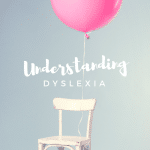As educators, some of us have been taught bullying tactics disguised as responsive learner instructional practices and interventions. The infamous excessive drill and practice exercises are one of those instructional practices that we either experienced as a learner ourselves or were taught to use as a part of our teaching pedagogy. Acknowledging October as Dyslexia Awareness Month, it is an opportune time to bring forth a deeper, meaningful learning approach for our learners who are identified as dyslexic. Dyslexia is a complex learning difference that affects individuals’ ability to read, write, and spell. Multisensory Structured Language (MSL) instruction is an evidence-based approach with remarkable success in supporting learners with dyslexia.
MSL attends to the following components: phonological awareness, phonemic awareness, systematic and explicit instruction, and multi-sensory techniques. By engaging multiple senses – visual, auditory, and kinesthetic – MSL instruction creates a rich learning environment that caters to diverse learning styles. Let’s delve into multi-sensory techniques, which is a key component of MSL, and explore practical examples of multi-sensory techniques that are most effective for reading instruction.
We want to provide learners with a little razzle-dazzle by incorporating these multi-sensory approaches to reading instruction. Multi-sensory techniques incorporate tactile, auditory, visual, taste, and kinesthetic experiences to reinforce learning and create lasting memory associations.
Multi-sensory Techniques
Here are some three multi-sensory techniques that we embed in our reading instructional approaches.
Hands-on activities, also referred to as tactile activities, provide learners with opportunities to touch and feel. For example, textured materials like sandpaper letters or letter cards with raised surfaces help learners learn the letters of the alphabet. Tactile activities help learners connect the visual symbol of a letter with its tactual form. This can be achieved by creating letters using different textures such as sandpaper, play-doh, shaving cream, etc. As a classroom practitioner, I have incorporated these various textures to support learners in acquiring letter awareness and knowledge. I maintained letter cards that had different textures and also created space for learners to use textures that they most preferred to create their own letter cards as we explored and addressed literacy skill development.
Kinesthetic Activities
Movement activities, or kinesthetic activities, engage learners in movement-based exercises such as tapping out syllables and hand movements for letter sounds. Movement has been shown to support learners in memory recall and increase attention. For example, when learning the word “umbrella,” learners can tap their fingers on their arms while saying “um-brel-la” to emphasize each syllable. One specific way I have engaged learners in my classroom that was extended into the general education environment was visual phonics. Visual Phonics provided learners with hand movements that worked alongside tongue movement and written text. Educators who engage learners in these types of movement activities realize increased learner engagement and improved learner outcomes.
Colored Overlays
Colored overlays are low-tech support that can be incorporated into the classroom for learners to utilize when they are engaging in the reading process. Some learners benefit from using colored overlays while reading to reduce visual stress. Educators can offer a variety of colored transparent sheets and provide opportunities for learners to choose the color that makes reading more comfortable for them. Colored overlays are a way to decrease feelings of overwhelmedness and frustration when reading textual information and increase focus on the reading mechanics and comprehension while also providing learner choice in the process.
Multisensory Instruction
Multisensory instruction embedded in our foundational reading components offers a lifeline to learners with dyslexia without the bullying tactics of drill and practice with which we are most familiar. By integrating multisensory techniques within reading instruction, educators can create inclusive and effective learning environments that offer differentiated options and various opportunities for content/concept exposure. When applied consistently, these strategies provide learners with dyslexia the practices they need to engage and decipher the world of literacy, empowering them to succeed academically and beyond. It is our collective responsibility to embrace these practices and ensure that no learner is left behind in the journey of literacy.




